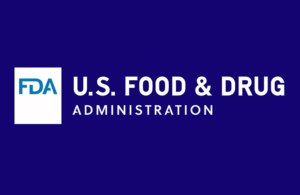 An FDA initiative meant to enhance medical device development is closer than ever to becoming a reality after it survived negotiations with the industry over the Medical Device User Fee Amendments (MDUFA) reauthorization.
An FDA initiative meant to enhance medical device development is closer than ever to becoming a reality after it survived negotiations with the industry over the Medical Device User Fee Amendments (MDUFA) reauthorization.
My last post on MDUFA V touched on the FDA’s Total Product Life Cycle Advisory Program (TAP) pilot laid out in the regulatory agency’s commitment letter. Though the pilot could be modified or scrapped by the FDA after hearing from the public in April or by lawmakers as they consider reauthorizing MDUFA, the letter offers the program’s latest and most detailed outline.
“The long-term vision for a successful TPLC Advisory Program (TAP) is to help spur more rapid development as well as more rapid and widespread patient access to safe, effective, high-quality medical devices of public health importance,” the FDA said in the letter. “A mature TAP will also help ensure the sustained success of the breakthrough devices program.”
A significant feature of the TAP pilot is that it would offer “regular, solutions-focused engagement” between medical device developers and patients, healthcare providers and payers.
FDA Total Product Life Cycle Advisory Program (TAP) pilot eligibility
Participation in the program is voluntary for medical product developers. The pilot will be open to products granted breakthrough status for fiscal years 2023-2025, while fiscal years 2026 and 2027 will be expanded to include products in the FDA’s Safer Technologies Program (STeP).
Each participant can have one product enrolled per fiscal year on a first-come, first-served basis. At the time of enrollment, the products must be early in the development process. That means no products for which a pivotal trial has been initiated, the FDA said. Products will not be eligible for enrollment if their companies have filed a formal pre-submission request for FDA feedback after the agency granted breakthrough designation or a request for inclusion in STeP.
The FDA will soft launch the pilot in fiscal year 2023 (which starts Oct. 1, 2022) with up to 15 products in a single Office of Health Technology. The process to choose that office will include a consideration of each office’s previous volume of breakthrough designations as well as their workloads and available staffing and expertise.
In fiscal 2024, the program would expand by up to 45 more products in at least two Offices of Health Technology. The program would continue to support the products enrolled in 2023, bringing the pilot up to a maximum of 60 products. Selection of the Offices of Health Technology in the pilot will include input from the industry and other stakeholders starting in fiscal 2024.
In fiscal 2025, the program would add up to 65 more products in at least four Offices of Health Technology for a total of up to 125 products, including ongoing support for products enrolled in previous years.
The program would expand by up to 100 products per year in fiscal 2026 and 2027, for a maximum of 325 products by the end of the pilot.
Total Product Life Cycle Advisory Program performance and assessment
The FDA will track qualitative and quantitative success metrics throughout the pilot, regularly reviewing progress with the industry and assessing the results and opportunities for improvement. An independent third party will conduct an assessment of the program to be published by the FDA no later than Jan. 30, 2026.
Two of the top performance metrics will measure the FDA’s ability to get on a phone conference within 14 days of a particpant’s request, and to offer written feedback within 40 days of the request. The goal is to hit those timelines at least 90% of the time.
The assessment will also include a participant survey to “measure satisfaction with the timeliness, frequency, quality, and efficiency of interactions with and written feedback from FDA.” Surveys will measure satisfaction levels for any voluntary interactions with non-FDA stakeholders facilitated by the agency.
Finally, the FDA will track TAP pilot success measures such as the time it takes to receive marking submission after breakthrough designation or request for inclusion in STeP; the time from receipt of marketing submission to authorization; and requests for additional information during submission review.
This performance-tracking and assessment likely helped with medical device industry representatives who expressed concern over the cost, complexity and necessity of the program, encouraging the agency to stay focused on existing programs and not risk distraction “from the core mission of premarket review,” according to meeting minutes released by the FDA during negotiations.